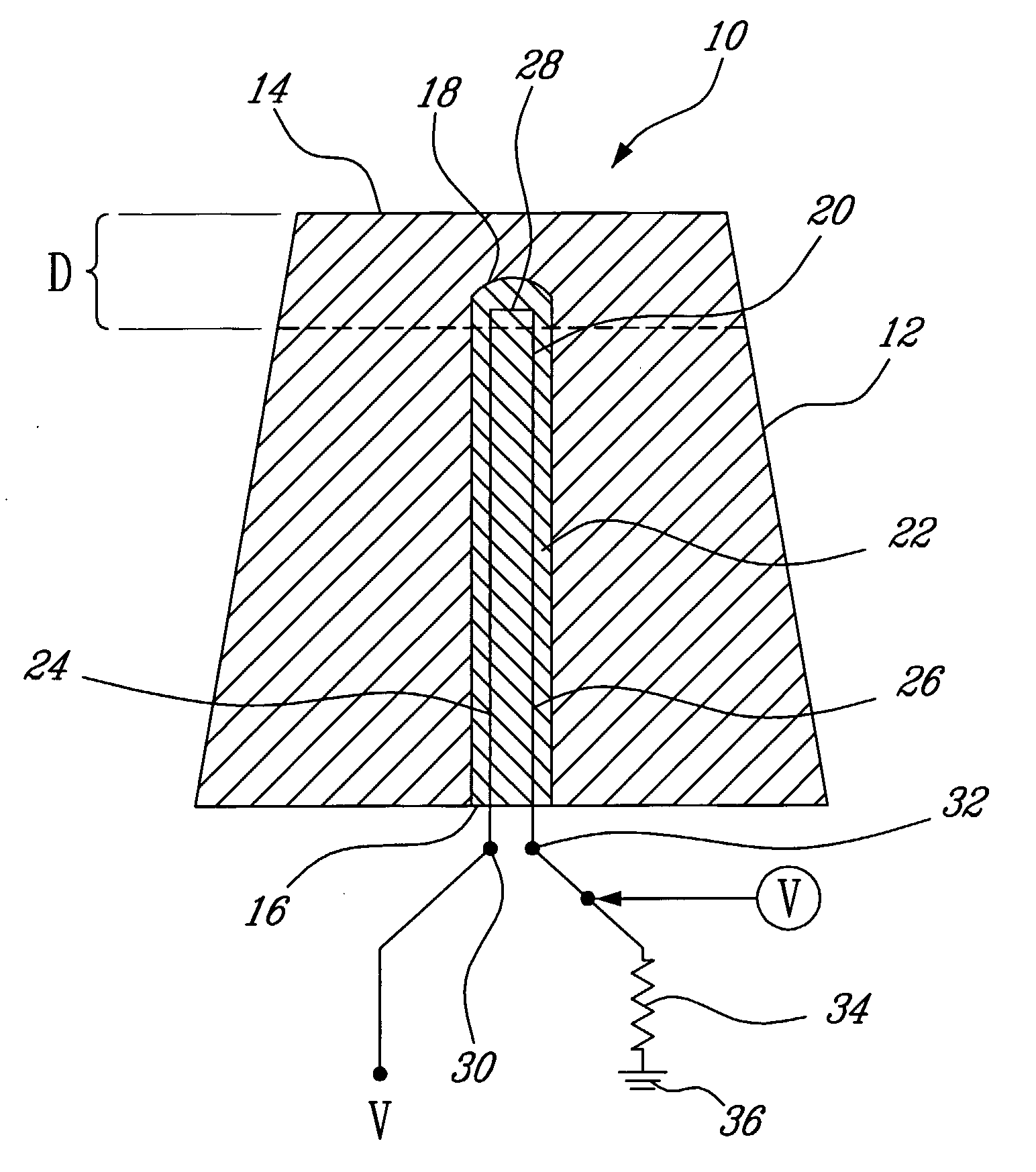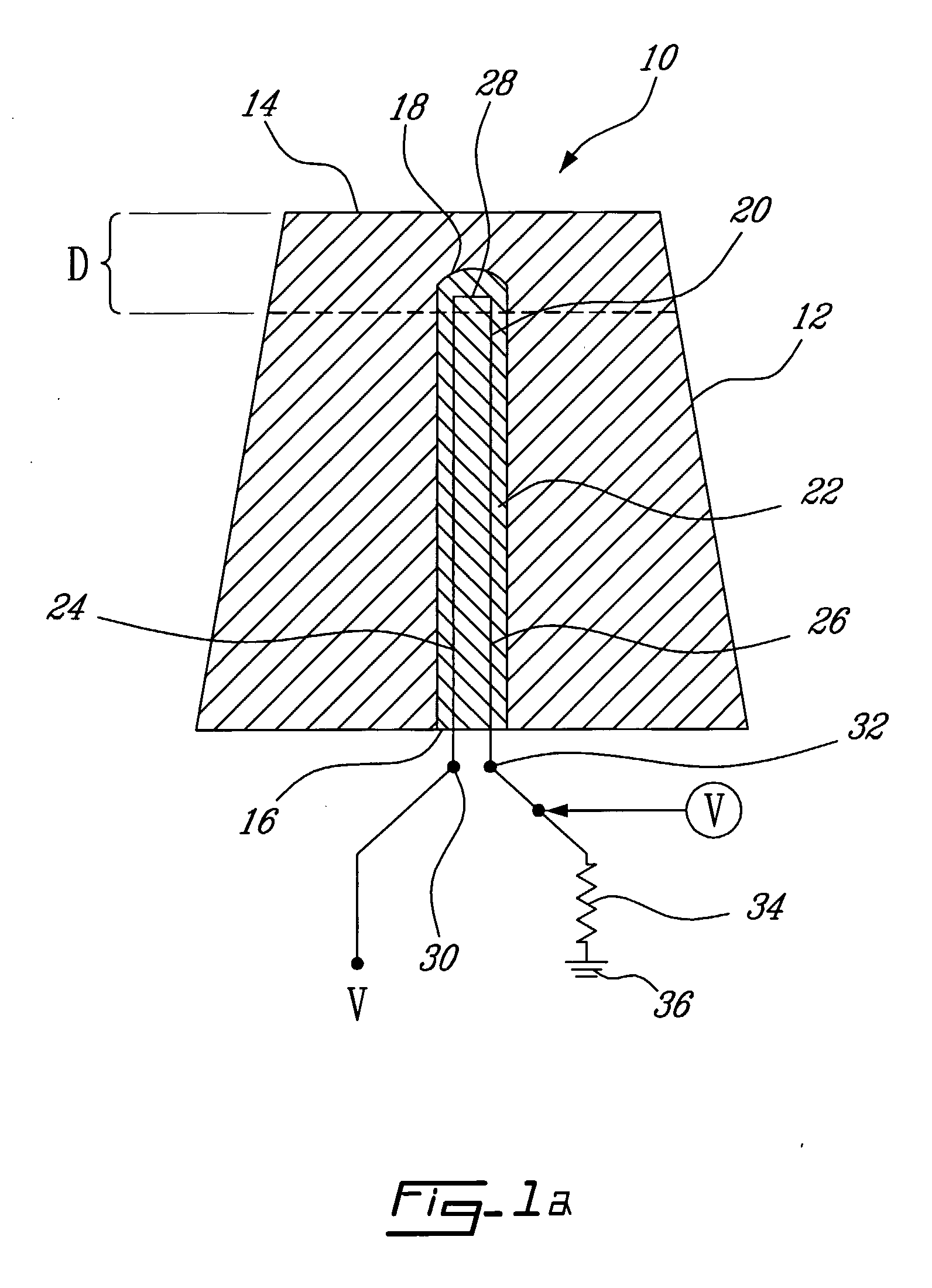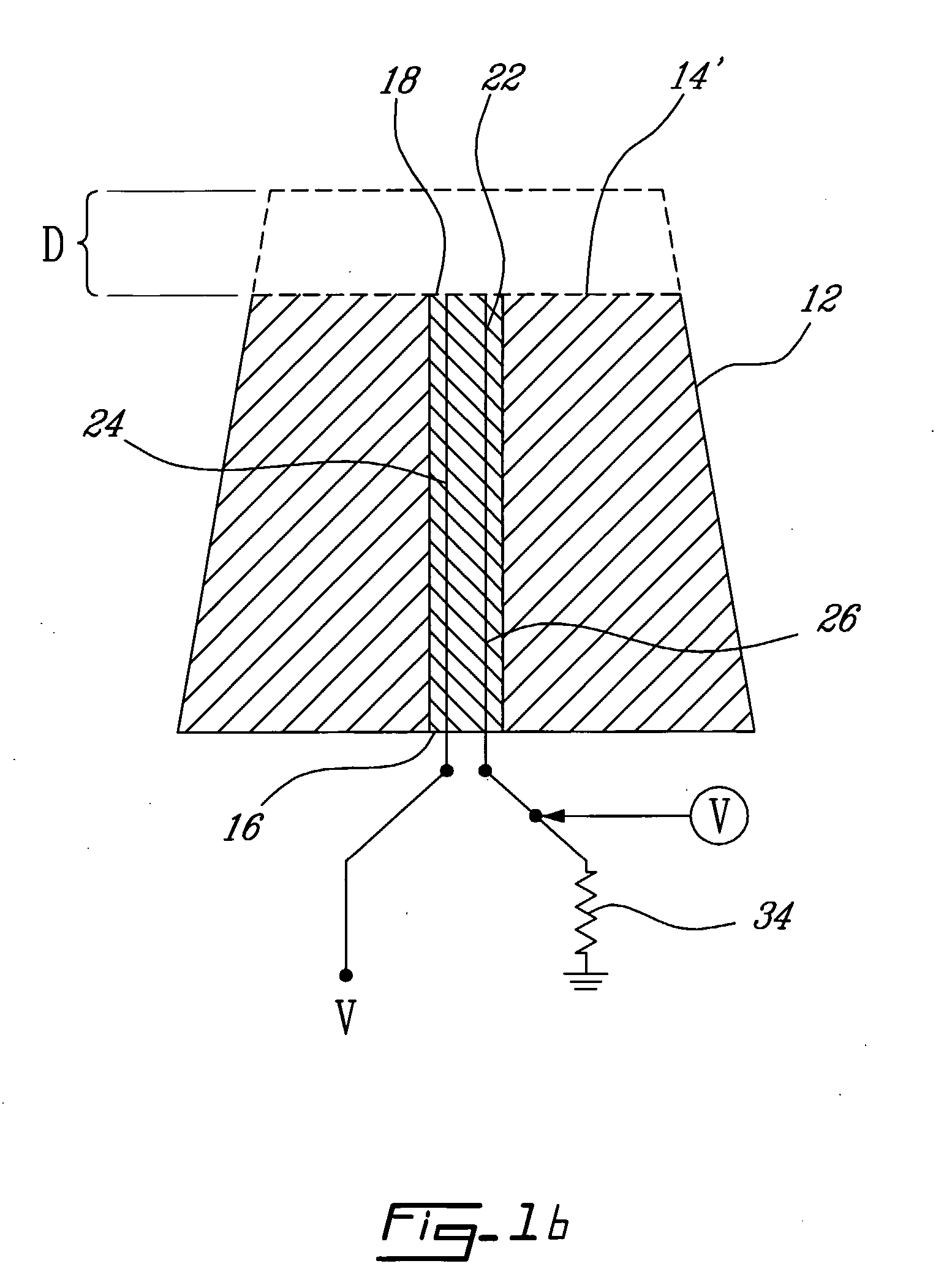Method and device for sensing wear
a technology of wear and sensing, applied in the direction of abrasion/wear resistance investigation, instruments, material analysis, etc., can solve the problems of crushing, cracking, breaking or otherwise forming into smaller parts, and wear on the inside of the mill is a serious problem, and it is difficult to predict accurately the best time to replace the liners
- Summary
- Abstract
- Description
- Claims
- Application Information
AI Technical Summary
Problems solved by technology
Method used
Image
Examples
Embodiment Construction
[0022] Referring to FIG. 1A, an illustrative embodiment of a wear sensor in accordance with an illustrative embodiment of the present invention. The wear sensor, generally referred to using the reference numeral 10, is comprised of a component 12 in which wear is to be sensed. The component has at least one wear surface 14 which will be slowly eroded through, for example, contact with abrasive articles or the like (not shown). A cavity 16 is machined or otherwise shaped into the component 12 with the tip 18 of the cavity 16 being positioned in proximity to the wear surface 14. A signal carrying loop 20 is inserted into the cavity 16 and secured therein using a filler material (or matrix) 22. The filler material 22, for example, is a non-conductive self hardening compound such as epoxy resin or the like.
[0023] In an alternative embodiment, the loop 20 could be directly moulded into the component 12 during fabrication, or comprise a lamination applied to the component 12.
[0024] Stil...
PUM
| Property | Measurement | Unit |
|---|---|---|
| diameters | aaaaa | aaaaa |
| erosion | aaaaa | aaaaa |
| distance | aaaaa | aaaaa |
Abstract
Description
Claims
Application Information
 Login to View More
Login to View More - R&D
- Intellectual Property
- Life Sciences
- Materials
- Tech Scout
- Unparalleled Data Quality
- Higher Quality Content
- 60% Fewer Hallucinations
Browse by: Latest US Patents, China's latest patents, Technical Efficacy Thesaurus, Application Domain, Technology Topic, Popular Technical Reports.
© 2025 PatSnap. All rights reserved.Legal|Privacy policy|Modern Slavery Act Transparency Statement|Sitemap|About US| Contact US: help@patsnap.com



